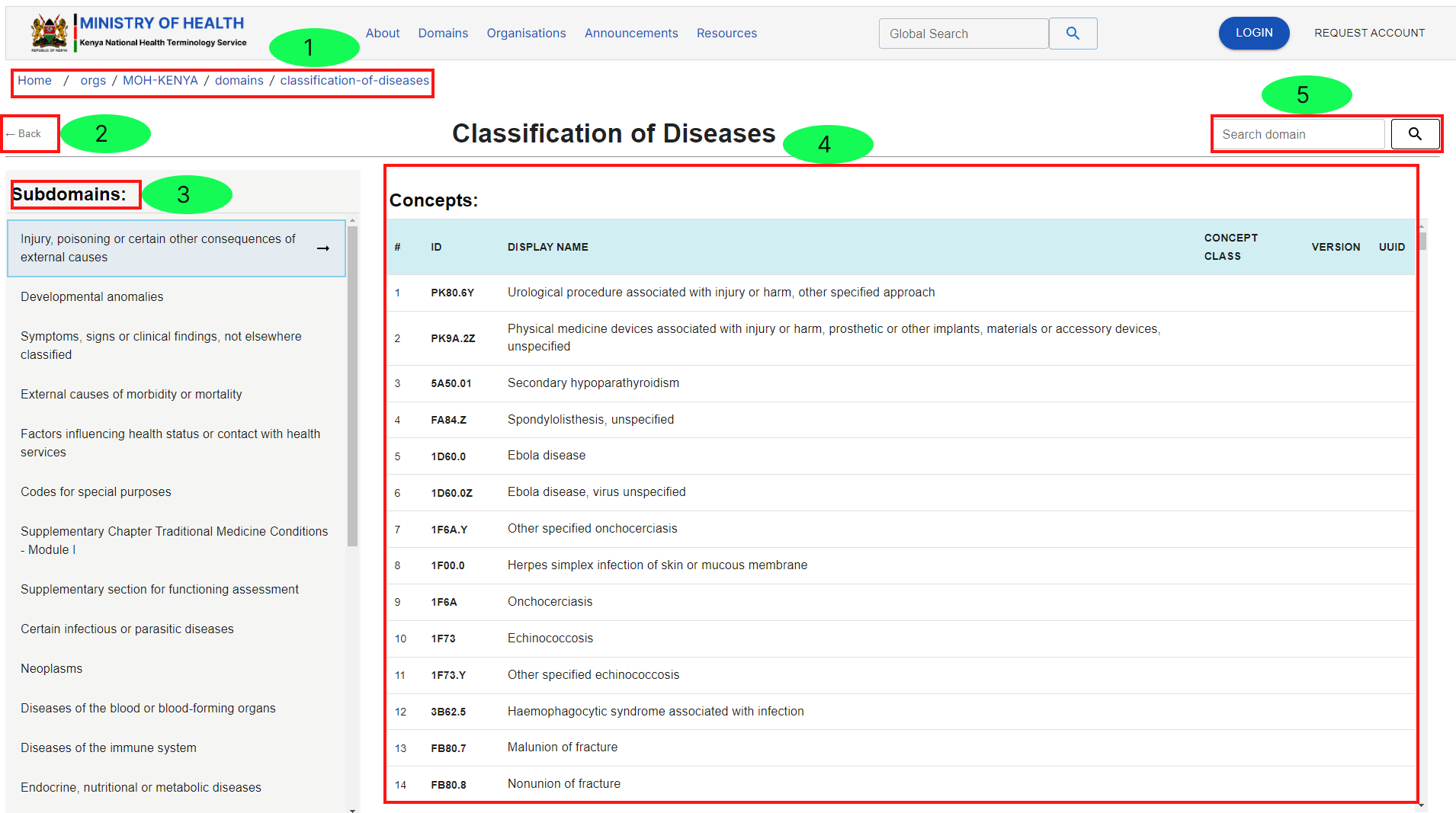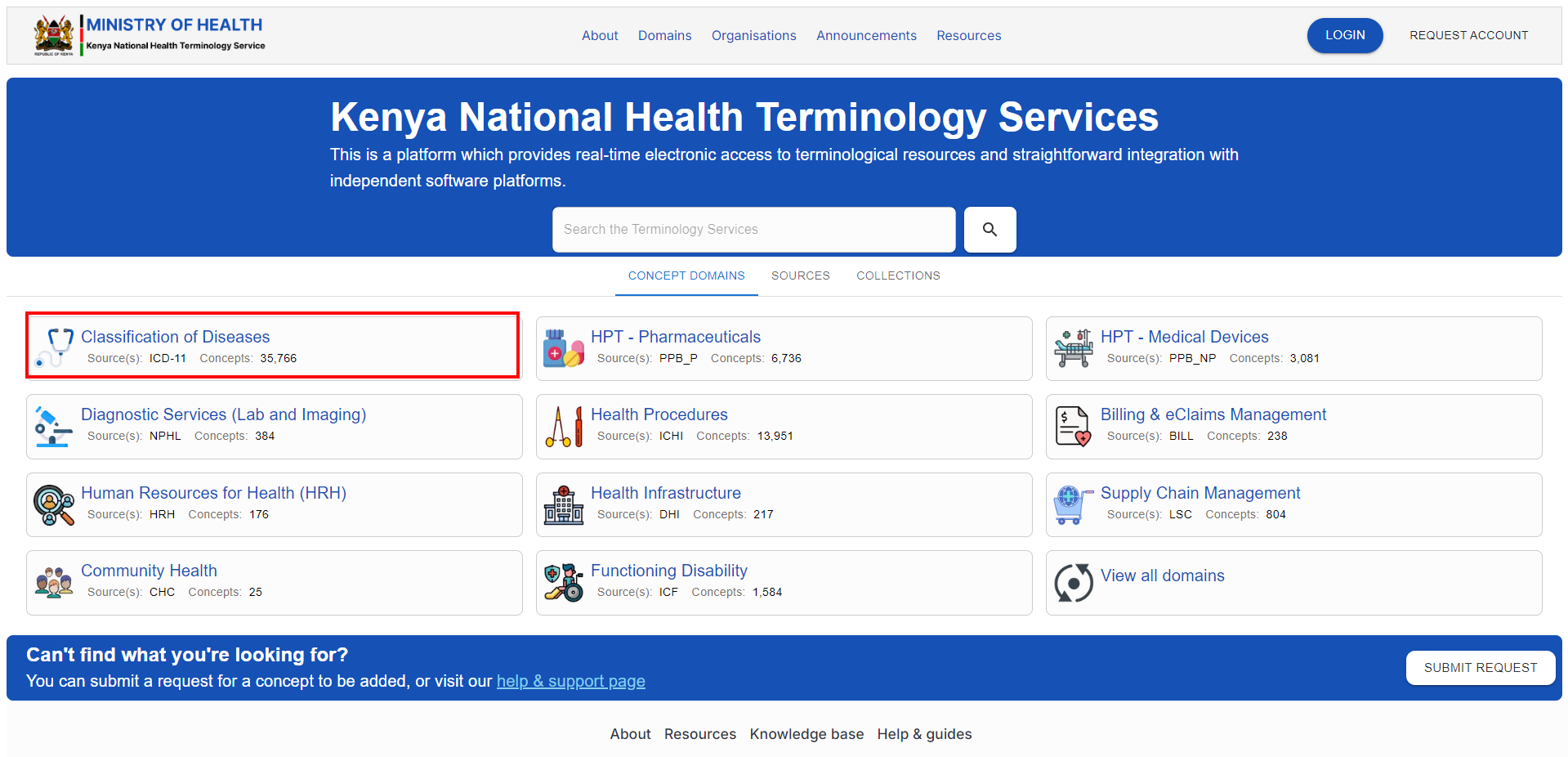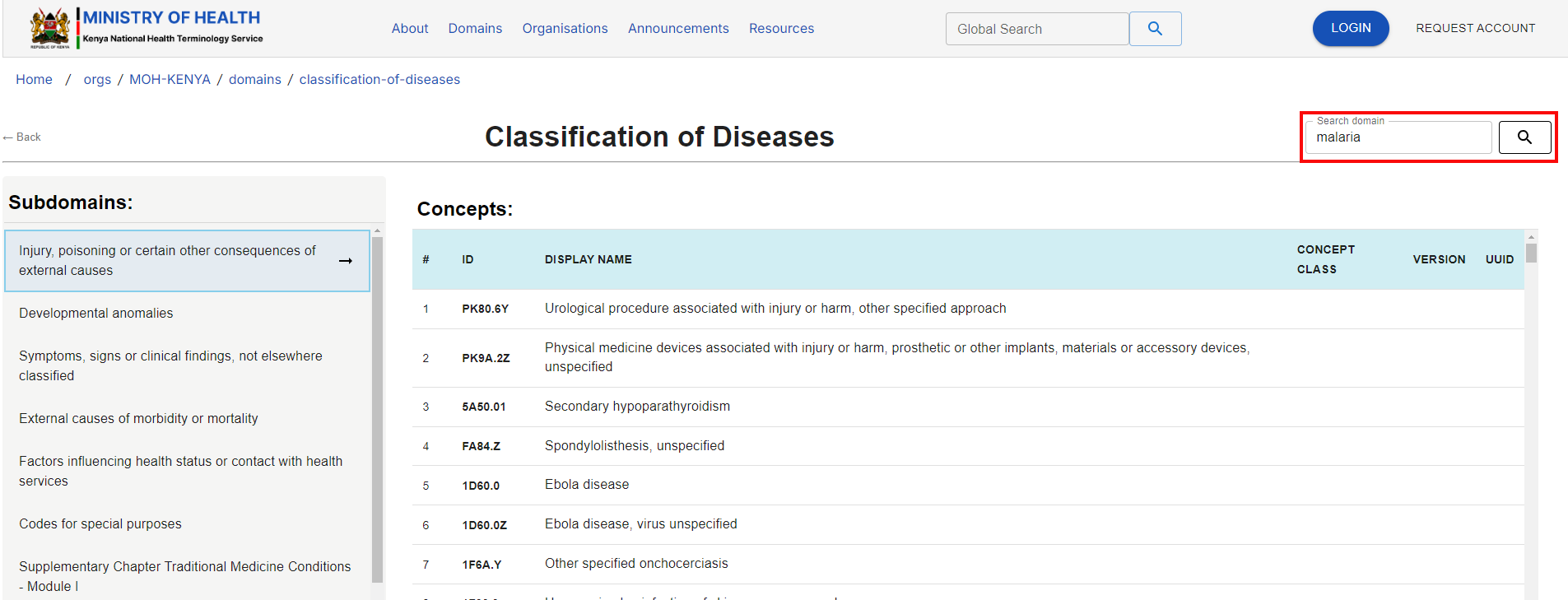This domain focuses on organizing and categorizing various diseases and related health conditions into a structured system. It helps in the standardized classification of diseases, making it easier for healthcare providers, researchers, and health information systems to manage and use disease-related data consistently.
N/B: The process of navigating around a domain and viewing concepts is the same across all domains
Navigating around the Domain
Click on the Icon and link shown above.
This will redirect you to the page below, where you can access, search and view the concepts in the domain.

- Navigation breadcrumbs
Navigation breadcrumbs are a user interface (UI) element that displays a hierarchical path of links, showing users their current location within the TS They provide a visual trail of the navigation path the user has taken to reach the current page or section.
Click on any link here to navigate back or forth to any point in your path.
2. Back Button
This is the left-facing arrow icon labelled with the word "Back," whose function is to let users go back to the previous page or screen they were viewing before their current one.
Click on the left-facing arrow icon to go back to previous page
3, Sub domains
Subdomains refer to specialized or narrower categories within a broader domain of concepts or terms. They are used to organize and manage concepts in a more granular way, making it easier to handle specific areas of interest or focus within a larger terminology system.
For example, this domain has concepts organized in 28 subdomains.
Use the scroll-bar on the left side within the sub-domains pain to see all subdomains
4. Concepts
A concept is a fundamental unit of meaning that represents a specific idea, object, or category within a given domain. In this domain, concepts refer to specific disease entities, conditions, or health-related phenomena that are categorized and described within the domain.
Concepts display within TS is characterized by
- Number - An incremental number within the list of concepts
- ID - This is unique id assigned to the concept by the system
- Display Name - This is a brief description using common and natural language easy for users to understand.
- Concept class - a concept class is a category or type of concept that groups related concepts based on common characteristics or functions.
- Version - refers to a specific iteration or update of a set of concepts, classifications, or terminologies within a domain. Each version represents a snapshot of the terminology at a given point in time, capturing the state of concepts, classifications, and relationships as they were defined and used at that time.
- UUID - <to confirm the difference with ID from Amos>
5. Search Bar and Search Button
You can search through the domain and sub domain using the search bar and search button. This search function searches within the specified domain, or the domain currently visited.
This search function should be distinguished from global search, which searches within the whole TS. The two types of search are described in the next section




